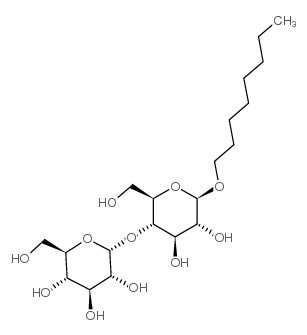Capillary electrophoresis of herbicides: IV. Evaluation of octylmaltopyranoside chiral surfactant in the enantiomeric separation of fluorescently labeled phenoxy acid herbicides and their laser-induced fluorescence detection.
Y Mechref, Z el Rassi
文献索引:Electrophoresis 18(2) , 220-6, (1997)
全文:HTML全文
摘要
A novel chiral nonionic surfactant, namely octyl-b-D-maltopyranoside (OM), was evaluated in chiral capillary electrophoresis of fluorescently labeled phenoxy acid herbicides. The labeling of the analytes with 7-aminonaphthalene-1,3-disulfonic acid (ANDSA) permitted a concentration detection limit of 5 x 10-10 M using laser-induced fluorescence detection. This limit of detection allowed the determination of ultradiluted solutions of the ANDSA-derivatized phenoxy acid herbicides whose concentration was a low as 10-11 M (i.e. 2.2 ppt) by applying the concept of field-amplified sample stacking (FASS). The sample injection by FASS did not adversely affect separation efficiencies, resolution and reproducibility of the electrophoretic system. The tagging of the phenoxy acid herbicides with ANDSA increased the hydrophobicity of the analytes, thus favoring an enhanced solubilization of the derivatized herbicides in the OM micellar phase. The net results of this effect were a much shorter analysis time and an improved enantiomeric resolution of the derivatives when compared to underivatized phenoxy acid herbicides. The optimum surfactant concentration required for maximum resolution decreased with increasing hydrophobicity of the analyte, with the least hydrophobic analyte requiring higher surfactant concentration. Because of the two permanently charged sulfonic acid groups of the ANDSA tag, the pH of the running electrolyte had little effect on the enantiomeric resolution of the derivatized herbicides. Due to its salting-out effect and increasing the micellized surfactant concentration, increasing the ionic strength of the running electrolyte increased the enantiomeric resolution of the least hydrophobic analytes. Conversely, increasing the percent methanol in the running electrolyte decreased the enantiomeric resolution of the least hydrophobic analytes due to a decrease strength of solute-micelle association. For hydrophobic analytes, existed an optimum percent of methanol existed for maximum enantiomeric resolution.
相关化合物
| 结构式 | 名称/CAS号 | 分子式 | 全部文献 |
|---|---|---|---|
 |
正辛基-β-D-麦芽糖苷
CAS:82494-08-4 |
C20H38O11 |
|
A large conformational change of the translocation ATPase Se...
2004-07-27 [Proc. Natl. Acad. Sci. U. S. A. 101(30) , 10937-10942, (2004)] |
|
Comparison of alkylglycoside surfactants in enantioseparatio...
1997-06-01 [Electrophoresis 18(6) , 912-918, (1997)] |
|
Binding of alkyl polyglucoside surfactants to bacteriorhodop...
2010-01-01 [Biophys. J. 94(9) , 3647-3658, (2008)] |
|
Nanocomposite formation between alpha-glucosyl stevia and su...
2012-05-30 [Int. J. Pharm. 428(1-2) , 183-6, (2012)] |
|
Capillary electrophoresis of herbicides. III. Evaluation of ...
1996-01-01 [Chirality 8(7) , 518-524, (1996)] |